Background
NE08 is home to the students and faculty of the Welding Program at BCIT. Welders contribute to a vast variety of BC’s industries including the production of structural steel for high-rise buildings and bridges, shipbuilding, mining, pipelines, and more. Metal welding and cutting produce air contaminants that are potentially harmful to students and faculty. Ventilation systems that remove these contaminants must therefore be put in place to ensure that the welding shop remains comfortable and safe for its occupants.
The old NE08 welding shop ventilation system was installed in 1983 and was due for replacement. It comprised five zones designed to remove air and welding vapours from work stations (welding booths, cutting tables, grinding machines, etc.). Each of the five zones was equipped with multiple exhaust fans and make-up air units that replaced the extracted air with outside air to prevent the building from operating under negative pressure. Staff turned the system on in the morning (at 7:00 AM Monday through Friday and at 8:00 AM Saturday). Staff turned the ventilation system off at the end of the instructional day (at 10:00 PM Monday through Friday and at 4:00 PM on Saturday). Once on, the ventilation fans ran at constant extraction volume and maximum capacity (approximately 66,000 cubic feet per minute) regardless of whether one welding booth was in operation or all 112 booths (80 booths for arc welding and 32 booths for oxy-acetylene welding) were in operation. The make-up air units needed to supply outside air to replace the extracted air. During colder months, this make-up air had to be heated by natural gas burners located in the make-up air units.
Problem and/or Opportunity
Analysis of historic energy consumption data showed that NE08 had the highest energy consumption per square metre of floor space of any building in the Factor Four Area. NE08 therefore became the subject of two high-level energy audits in 2010: one by BCIT SEMAC students and the other by a consultant engaged by BCIT under the Fortis BC Energy Assessment Program. Both studies identified the inability of the existing ventilation system to adapt to varying ventilation requirements as a significant source of energy wastage – electricity to run the ventilation and make-up air fans and natural gas to heat the make-up air – and, as such, an outstanding energy savings opportunity. Based on these two studies, the SoCE released funds for a detailed study of the ventilation system.
Solution
A new “intelligent”, “demand-controlled” ventilation system has now been installed in NE08. The system is “intelligent” in that it is able to detect how many work stations are in use at any given time then adjust ventilation and make-up air fan speeds to provide just the right amount of ventilation and make-up air to the building. This strategy – known as “demand-controlled” ventilation – minimises the amount of electricity required to operate the ventilation and make-up air fans as well as the amount of natural gas required to heat the make-up air during colder months. Here’s how it works:
1. Each welding booth is equipped with a fume hood connected to the main air extraction system ducting. Each fume hood continually extracts approximately 200 cubic feet per minute (cfm) from inside the booth. This constant volume extraction and equivalent make-up air provide base ventilation to meet building code requirements regardless of how many work stations are actually in use. The fume hood extraction also serves as “back-up” in case the students do not properly locate the telescopic arms while welding (see below).
2. Each work station is also equipped with a telescopic arm that is also connected to the main air extraction system ducting. While the work station is not in use, a damper in the work station ducting remains closed so that no air extraction is applied to the telescopic arm in the idle work station.
3. Work stations are equipped with one of three control technologies that signal the system to begin extraction:
i. Control Technology 1 – As a student switches welding equipment, a current transformer (commonly called a CT) signals the controller that extraction at the telescopic arm is required. This technology is being tested in all arc-welding booths except 16 that are using technology 2 (see below). The advantage of this technology is that fumes are only extracted when created, maximizing energy savings. The disadvantage is that it does not offer a “buffer” and a fear is that during the first fraction of a second, the fumes are not captured by the telescopic arm (and rather gets capture by the hood extraction).
ii. Control Technology 2 – As a student enters the welding booth, a motion sensor located inside the booth signals the controller that extraction at the telescopic arm is required. This technology is being tested in 16 arc welding booths. The advantage with this technology is that it offers a guaranty that when a student will create fumes, the ventilation system will already be On. The disadvantage is the fan could be extracting air (warm air in the winter) for fairly long period of time before any fumes are created, as the student needs to do a lot of preparation work in the booth before striking an arc.
iii. Control Technology 3 – As a student enters a grinding booth, they have to step on a pressure sensitive mat that is connected to the control box. The disadvantage of this solution lies in the unknowns regarding maintenance (how difficult it will be to clean the mats, and how likely is it they will get damaged because of hot material falling on the floor).
iv. Control Technology 4 – A fourth technology that has not been implemented as part of this project is an arc sensor. As a student switches welding equipment on, an arc sensor located on the equipment sends a signal to the ventilation system controller telling it that this station is no longer idle and now needs extraction at the telescopic arm. This technology has similar pros and cons to the CTs option.
Testing different technologies is one more way BCIT is embracing the living lab concept.
4. Once occupancy is detected, the ventilation system controller opens the damper in the extraction system ducting at that work station to apply extraction to the telescopic arm in that work station.
5. The ventilation system controller then sends signals to the variable frequency drives on the extraction fan and the make-up air fan telling them both to speed up enough to supply additional extraction and make-up air to the system to accommodate the extra operating work station. For every work station that comes online, the system adds approximately 500 cfm of extraction and make-up air capacity.
6. While the work station is in operation, air contaminants are removed through the fume hood and the telescopic arm to maintain air quality.
7. As students switch equipment off (in the case of the arc sensor controls) or leave the booth (in the case of the occupancy sensor controls), the ventilation system controller closes the damper at the telescopic arm and instructs the extraction fan and make-up air fan to slow down in response to the lower extraction demand.
The project was completed in the fall of 2013.
Technologies Implemented
- Demand-controlled ventilation strategy with intelligent system controls
- Current transformers (to detect welding booth operation)
- Motion detectors (to detect welding booth occupancy)
- Pressure sensitive mats
- Variable frequency drive fan motors
- High efficiency fan motors
- Hot water coils ready make-up air units (to eventually replace the indirect gas-fired burners with heat coming from the Carpentry/Joinery Factor Four biomass system.
Energy Savings and GHG Emissions Reductions
The ability of the system to adapt to the varying extraction/make-up air demands is where the energy savings lie. The new system will enable the reduction of both extracted air volumes and make-up air volumes. Less air to move means less electricity required to operate extraction and make-up air unit fans. In turn, less natural gas will be required to heat the make-up air during colder months. GHG emissions reductions will result from lower electricity and natural gas consumption.
Total energy conservation (measured, normalized savings after a a few months of operations) :
- 6,500 GJ/yr of natural
- 800,000 kWh/year of electricity
- 9,500 GJ/yr or 2,550,000 eKwh/yr of total energy conservation per year
- 150 kW reduction in electricity demand
- At 2014 energy rates: $150,000 per year (including demand charges)
- Note: there are also approximately $5,000 to 10,000 per year of predicted maintenance cost savings and an unknown $ figure for shielding gas cost savings.
Additional Benefits and Features
- The new system improves ventilation effectiveness and air quality for students and faculty.
- The upgrade reduces noise levels in the welding shop, making NE8 a better place to work in, making it more suitable for education.
- Before the retrofit, specific instructions were given to students in order to make the existing ventilation system WCB compliant (e.g. students must keep their metal components within a certain distance of the air intake when welding). This creates limitations to the curriculum (because of metal plates and pipes size, shape and welding positions). The new system will allow instructors to effectively cover all learning outcomes of their curriculum without restriction.
- As part of the new ventilation system design, space for heating coils was included in the design of the make-up air units. The heating coils, once installed, will make it possible to heat NE08 using carbon-neutral hot water from the Factor Four wood waste-to-energy facility once it is operational.
- During construction, many leaks in the pipes delivering the shielding gases were detected. Leaks were fixed and it is anticipated that cost savings on the purchase of shielding gases will be significant.
- Providing state of the art equipment within the educational facilities improves the quality of education for the students. Exposure to this equipment could make students more valuable to future employers that may be looking at upgrading existing ventilation systems.
Project partners
Fortis BC funded the initial engineering assessment. The project was also made possible through the dedicated teamwork of project managers from BCIT’s Facilities and Campus Development group working with the staff from the Welding department. BCIT anticipates receiving a $172,000 contribution from BC Hydro Power Smart.
Project fast facts
- $515,000 incremental cost
- $172,000 of utility incentive
- $150,000 saved in 2014
- 350 tonnes of CO2e reduced
- This project is equivalent to not burning more than 150,000 litres of gasoline every year
- This project conserves enough electricity to fully power 89 average Lower Mainland single family homes
- This project conserves enough natural gas to heat 190 700-ft2 Lower Mainland apartments
- It would require 9 BCIT Oasis projects side-by-side to produce the same amount of energy conserved by this welding ventilation retrofit project (all sources of energy converted to ekWh)
Project folder
Watch a summary video of this energy retrofit project
- Crane lifting new MUA unit on rood – May 6th, 2013
- A few exhaust fans and new Make-Up Air Unit
- New Exhaust fan and new Make-up Air Unit
- New Exhaust fan
- General view – Lots of work in progress on the roof!
- New Welding Booths!
- Low CFM secondary fume capture using hoods
- Actuator for damper – The new system is demand-controlled
- Controls in each booth
- Local air extraction using telescoping arm
- Occupancy sensor in each booth – The new system is demand-controlled
- New Ducting – First 16 Welding Booths completed
- Scaffolding around AHU #2 and #3
- Temporary Access to Roof
- Welding booths – AHU #2 (under construction)
- Ducting – New AHU #2
- Documents & Reports coming soon (including originals studies, final design and balancing report)
- Drawings, Schematics, & Specifications (coming soon)
- Old System Air Balancing Report
- Data Logger NE8 Welding Machines – Utilization rate
- Energy Savings Calculations – Electricity
- Energy Savings Calculations – Natural Gas
- Raw data before and after
- NE8 Measurement and Verification (M&V) – Partial (using BCIT-own, building-level meter)
- NE8 Measurement and Verification (M&V) – Full version by third party (using utility-own, sub-station level revenue meter – i.e.: metering multiple buildings)
- Instructor Resources
More Information:
BC Hydro Power Smart Excellence Awards Nomination
BC Hydro August 2013 Newsletter
BCIT Update Article (February 2013)
Learn more about Factor Four’s wood waste-to-energy (biomass) project
Learn more about the technology selected for the smart ventilation


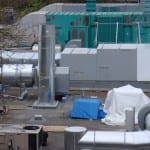
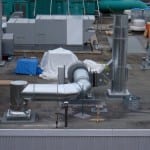

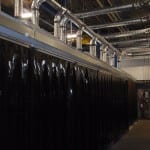
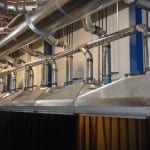

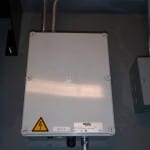
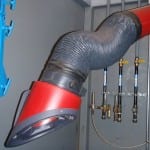
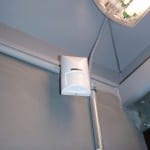

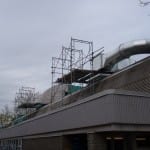

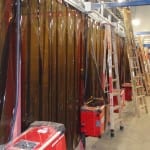
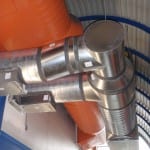
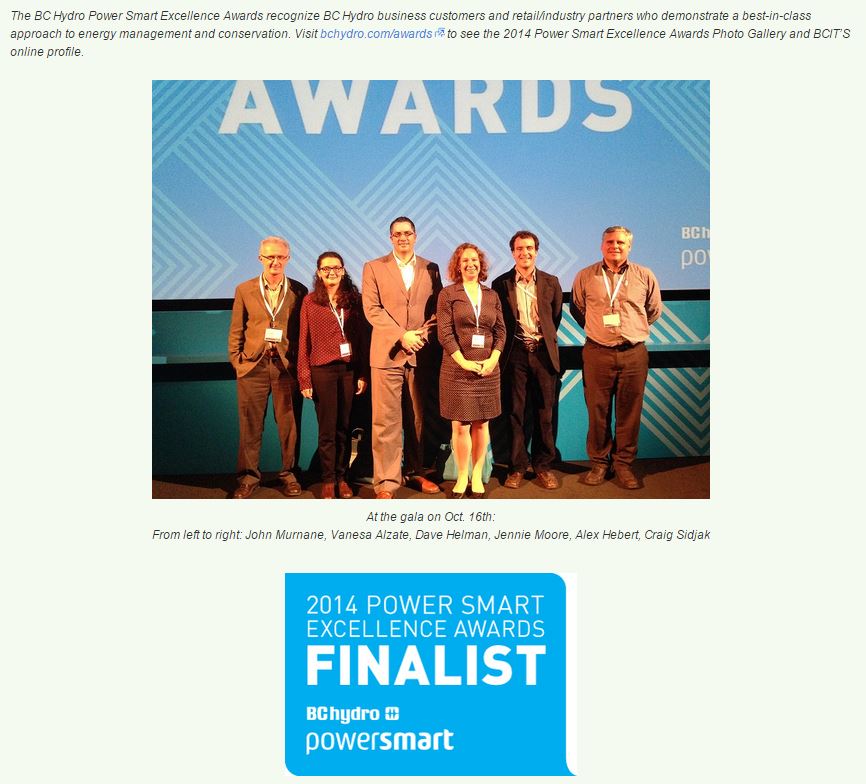
This is a very exciting project and an excellent demonstration of the leverage that can be achieved when the educational and administrative arms of the Institute collaborate. Congratulations everyone.